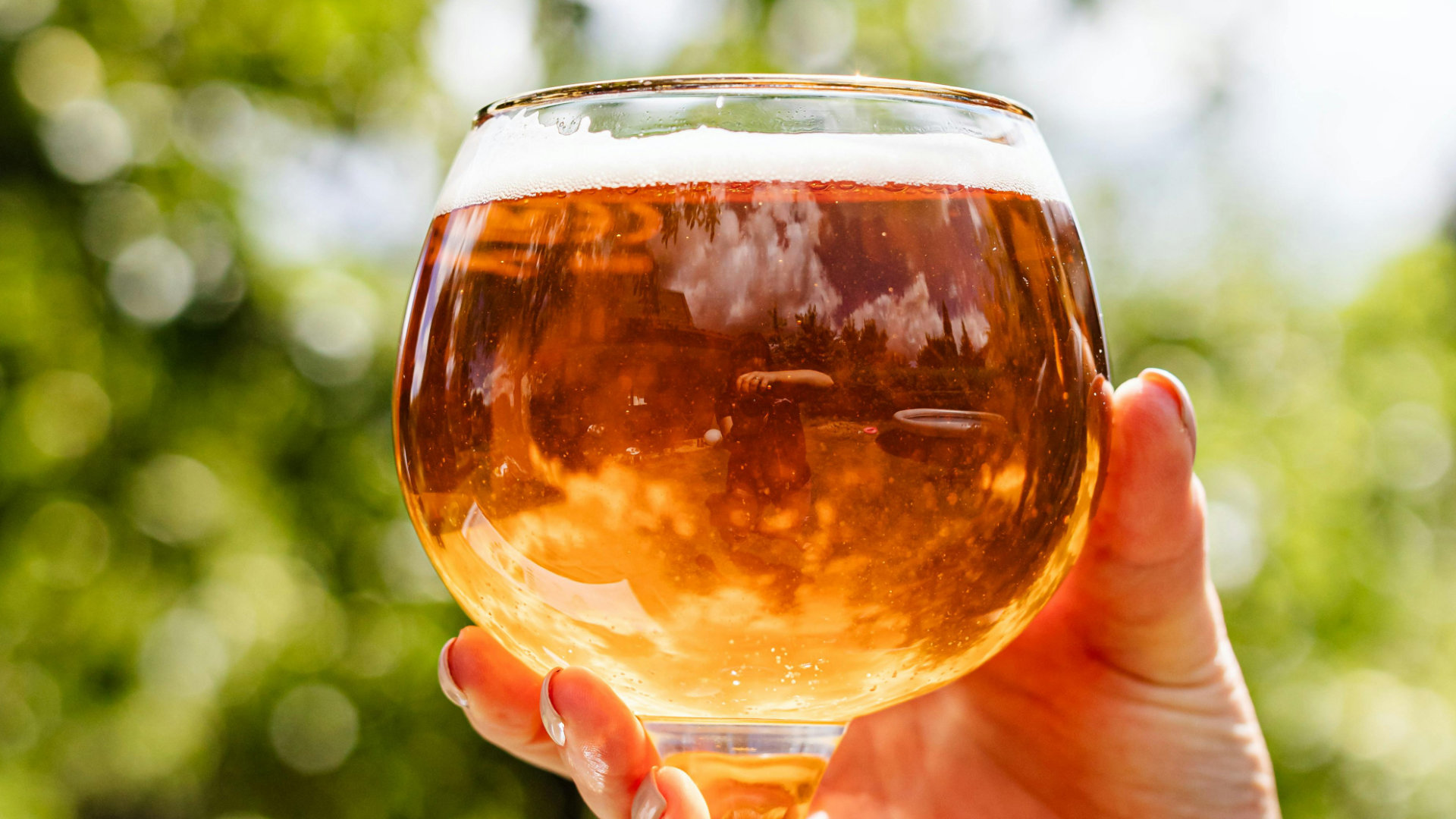Sarah Pantry, BJCP certified beer judge and organiser of the Welsh National Homebrew Competition, shares her tips on how your brews can scoop the top prizes from homebrew competitions.
How do you score the beers you’re judging?
This is quite a long process taking up to 15 minutes per beer. I’m just starting a
livestream series teaching people how to do this (@daftcatbrewing on YouTube). At its core, we look at the beer and score it based on how well it meets the style expectations in the following categories:
Aroma - max 12 points
Appearance - max 3 points
Flavour - max 20 points
Mouthfeel - max 5 points
Overall impression - max 10 points
This gives a beer a total score out of 50 points.
What’s a good way to get started in competition homebrewing? What are your top tips for brewing and submitting a winning brew?
Start by nailing the basics like sanitation and fermentation so you can brew good, consistent, clean beer. We often see these two points letting beer down in competitions. Once you can do that then start to develop recipes intentionally to hit the specs of a style. If the style calls for caramel-like flavours or coffee aromas, then the judge will be specifically looking out for those elements when judging. I also suggest pushing the envelope in one area or another. Beers that do best tend to hit
the style really well but may be at the top end of the hopping rate or ABV as a way of standing out from the other 8 beers of the same style that have just been judged. Make the beer fit the style but also stand out from the crowd.
I’ve entered a competition before and didn’t do well. How can I a) improve my confidence to get back in the saddle and b) do better next time?
It is something that happens to us all at some point and can be disheartening. If you have entered a BJCP sanctioned competition, and to a lesser extent some shop or brewery competitions, then you will usually get a full comprehensive feedback sheet
back from at least two judges. This usually explains what you need to do to improve the beer for next time. Nearly all judges I know are motivated by helping you brew better beer and this shows in the feedback they provide. When it comes to confidence, I’d suggest checking over the feedback you had last time and seeing how implementing some of the advice changes your beer next time you brew it. Generally the improvement you see will be all the encouragement you need to try again, and you should be able to go in with the confidence that, even if your beer doesn’t win a medal, you will find out what you can do to improve it even more.
Will the Welsh National Homebrew Competition resume when restrictions allow? Can you recommend other competitions for both beginners and advanced brewers?
I announced earlier this month that I plan on running the Welsh this year, on the proviso that we can do it safely. Many of our judges are actually in the higher risk age groups so I’m mindful of safety over everything else. I don’t know many other comps are running this year. I believe that Brew Con will be running their one in Novemberish - assuming the event goes ahead - but I think that is probably it until next
year, when I hope the UK national will be back as well as several competitions run by London Amateur Brewers (LAB).
Do you need fancy equipment to make good enough beer to be in with a chance of winning anything? Can you enter with an extract brew?
Whilst we as judges never know how a beer is made, e.g. if it is a kit, extract or all grain, as a competition organiser I know that extract beers have indeed won overall in competitions before. And there is no need for fancy equipment. The beer I brewed which won the UK National was done on the cheapest all-in-one system on the market at the time, but could have just as easily been done on the stove top with a large pan.
Where do you think the line falls with additions and styles of beer where a brew might taste more like a cake than a beer? Where do you stand on adding essences/flavourings to beer?
Some of these super sweet pastry stouts are my idea of purgatory, however I know many people do enjoy them or commercial breweries would stop making them very quickly. Personally, I feel beer should be identifiable as beer -if it has no bitterness at all, no residual sweetness and no noticeable grain or hop aromas/flavours, you’re not drinking beer. That being said, when I judge beer it’s all about how well the beer fits the style it was entered in, even if it is a style I don’t personally like. Extracts and essences are a good and far safer way of getting things like fruit flavour / aroma into your beer than the relatively dangerous and highly variable process of using fresh fruit. Overall, if you are not entering a beer into a competition then you’re free to do anything you like and if the beer tastes good to you then it’s a winner every time.
What is the best/worst brew you’ve sampled so far in your role as a judge?
Great question - and a subjective one. I suppose the best was probably a practically perfect Munich Helles that won the UK national back when I first
stewarded at a competition. One that I personally enjoyed most was when I was organiser - and not officially judging - but I had a chance to try a chocolate milk stout that won the Welsh. The worst was a beer that was literally undrinkable as the aroma
and appearance was enough to convince me that it wouldn’t have been safe to drink. It is the only time I have not even sampled a beer that came through for judging. It had an overpowering smell that would make a wastewater treatment plant smell pleasant.
How do you become a judge? Any tips?
I’m just starting a livestream series on my YouTube channel where folk can come along and learn to judge beer. Each week we pick a different, easily available commercial beer and go through scoring it as if it had been entered in a competition. This is very much like the training I have given in person in pre-covid days when
doing a pre-exam prep course for future judges. Once the world is back to a more normal environment again, and it’s safe to start meeting up in large groups, we’ll have several folk up and down the UK starting to do in-person exam prep courses again and hosting the BJCP exams so you can certify as a judge.
There is a two step process with an online entrance exam which tests your
knowledge of beer, brewing and different styles and once you pass that you are then able to sit a tasting exam. If you pass that exam then you become recognised as a BJCP beer judge. There are other organisations and routes to beer judging, however this was the
route I took. My suggestion would be to start by taking your time over beer, seeing how well you can describe what you are drinking and start to evaluate beer rather than just drink it.
- @adventures_in_homebrew
Q’s from our Community
‘What are the most common mistakes or misconceptions that you see homebrewers making?’
There are two main areas I see this come up most often. One area is mistakes while brewing the beer, e.g. letting the beer get too warm whilst it is fermenting, not sanitizing thoroughly and not giving the beer enough time to condition properly. The second is when they enter a beer into competition and don’t pay attention to the style they are entering it under. We often see beers that would have scored well under one style, but they do poorly as they were entered under a different one. It’s always worth reading what is expected for a style while you drink one of your beers before entering it as competitions are nearly always judging your beer against a set of criteria like one of the BJCP styles. If your beer doesn’t meet that style, it will not do well even if it is a gorgeous beer.
‘I’m contemplating investing in a “Tilt†type device, which is a major outlay. Do you think being able to monitor SG and pH that closely is useful and how complex is adjusting it? Personally brewing a lot of Norwegian Farmhouse ales (Kveik yeasts) at the moment that seem to be quite happy “rolling with the punches.†- Graeme Stewart
I have the Tilt here and I consider it a fun brewing toy rather than a serious brewing tool. It’s nice to be able to see trends in your beer and this is something the Tilt, and other similar devices do well, but if you are after accurate readings, you’re better off taking manual readings with a hydrometer. I use mine, when I remember, to give me an idea of when it stopped fermenting.











